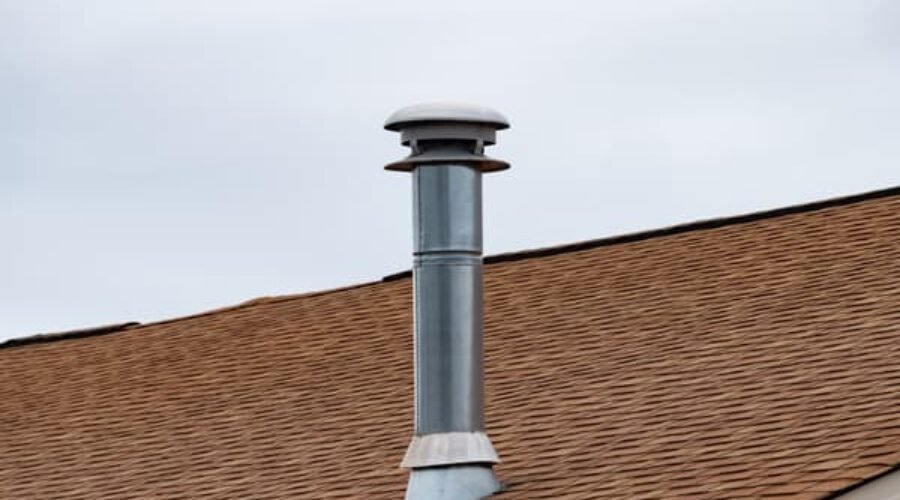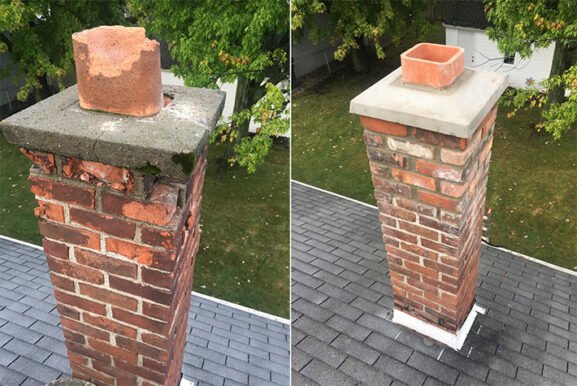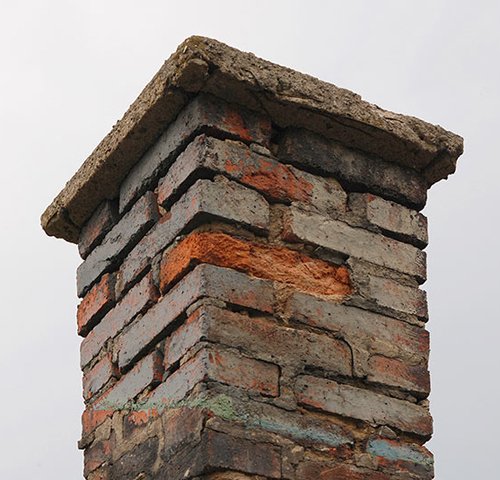Why Now Is the Right Time to Learn How to Repair a Chimney Flue
Key Takeaways
- A damaged chimney flue can lead to serious safety risks such as carbon monoxide leaks and chimney fires.
- Common flue problems include cracks, creosote buildup, and liner deterioration, each requiring different repair strategies.
- Flue repair methods vary depending on the chimney type and severity of the damage, from relining to sealing cracks.
- Addressing flue issues early helps maintain proper ventilation, ensures fire safety, and prolongs the life of your chimney system.
Understanding What a Chimney Flue Does
The chimney flue plays a critical role in venting smoke, gases, and heat from your fireplace or furnace to the outdoors. It ensures that toxic fumes like carbon monoxide don’t linger inside your home. Over time, this vital part of the chimney can suffer wear from high temperatures, moisture, and creosote buildup. When the flue is compromised, the safety and efficiency of your entire heating system are at risk.
Before attempting any repairs, it’s important to understand the type of flue your chimney uses. Most residential chimneys either have a clay tile liner or a stainless steel liner. Each has its own repair requirements and lifespan. While steel liners are often easier to replace, clay tile flues typically need specialized patching or relining work.
Signs That Your Chimney Flue Needs Repair
Recognizing early signs of flue damage can prevent more costly structural issues and fire hazards. Some of the most common indicators include:
- Smoke backing up into your living space
- A strong, burnt odor near your fireplace or appliance
- Pieces of tile or metal inside the firebox
- Cracked flue tiles visible from a chimney inspection
- Water leaks or rust stains inside the chimney chase
Even if these symptoms seem minor, they can point to a compromised flue system that needs immediate attention. If left unaddressed, small cracks and gaps can allow hot gases to seep into walls or attic spaces, increasing the risk of a chimney fire.
Common Causes of Chimney Flue Damage
There are several reasons why chimney flues deteriorate. One of the main culprits is excessive creosote buildup, especially in wood-burning fireplaces. Creosote is a flammable byproduct of combustion that can harden into a glaze and lead to liner corrosion. Moisture intrusion is another serious issue—whether from rain entering an uncapped chimney or condensation forming inside the flue. Moisture weakens both tile and metal liners over time.
Temperature shifts also play a role. The constant expansion and contraction during heating and cooling cycles can crack tiles and loosen mortar joints. In older homes, the original flue materials may simply reach the end of their service life and begin to crumble or detach.
How to Safely Repair a Chimney Flue
Flue repair should always start with a professional chimney inspection. This is typically done using a video camera that travels the length of the flue to identify cracks, blockages, and deterioration. Depending on the findings, one or more of the following repair methods may be needed:
1. Sealing Cracks with Flue Sealant
For minor cracks or gaps in a clay tile liner, professionals often use a heat-resistant sealant known as a flue resurfacing system. This compound is poured or brushed inside the flue and then smoothed to form a continuous, airtight barrier. This method restores the liner’s function without replacing it and is ideal for moderate wear and tear.
2. Installing a Chimney Liner
If the flue is beyond repair, the safest and most durable option is to install a new liner. Stainless steel liners are flexible and corrosion-resistant, making them a popular replacement choice. They are inserted down the flue and connected to the appliance or firebox, then insulated for improved efficiency.
In some cases, a cast-in-place liner may be used. This method involves pouring a cement-like mixture around a removable mold inside the flue, which hardens to create a seamless liner. While more labor-intensive, this solution can add structural support to an older chimney.
3. Replacing Damaged Tiles
For chimneys with a tile liner, replacing individual tiles is difficult and usually requires opening the chimney structure. This method is less common and typically reserved for historical restorations or specific code requirements. It is usually more economical and safer to reline the entire flue instead of replacing tiles piece by piece.
When to Call a Professional
Chimney flue repair is not a DIY-friendly task. Working inside a flue involves handling high temperatures, toxic residues, and confined spaces—all of which present safety risks. More importantly, improper repairs can make the problem worse or leave your home vulnerable to fire and gas leaks.
Hiring a certified chimney technician ensures the job is done correctly. Look for professionals certified by the Chimney Safety Institute of America (CSIA) or other recognized organizations. These technicians follow national fire codes and can recommend the most appropriate repair methods based on a full chimney inspection. You can explore more about certification standards and flue safety on CSIA’s official website.
What to Expect During a Flue Repair Project
The timeline and cost of a flue repair will vary based on the chosen method and the condition of the chimney. A basic flue sealant job may take a few hours, while a full stainless steel relining project could span several days. It’s also important to consider whether any additional repairs are needed, such as repairing the chimney crown, masonry, or flashing to prevent future water damage.
Professionals usually begin by cleaning the chimney thoroughly, which is essential for identifying hidden cracks and ensuring a good bond for any sealant or liner. Once repairs are complete, your technician may also recommend installing a chimney cap or improving ventilation to extend the life of the flue.
Protecting Your Investment Long Term
Regular maintenance is key to keeping your chimney flue in working order. Annual inspections and chimney sweeps help spot early signs of wear and keep creosote buildup under control. If you rely on your fireplace or heating appliance regularly, especially in colder regions, these checkups are non-negotiable.
Ignoring a compromised flue can lead to thousands of dollars in structural repairs or even put your family’s safety at risk. By staying proactive, you can preserve your chimney’s function and enjoy peace of mind all season long.
Final Thoughts on Maintaining a Safe Chimney Flue
Understanding how to repair a chimney flue is about more than fixing cracks or replacing liners. It’s about maintaining a system that protects your home from fire hazards and air quality issues. Whether you’re dealing with minor deterioration or planning a full flue replacement, timely professional repairs are the smartest investment in long-term home safety.


